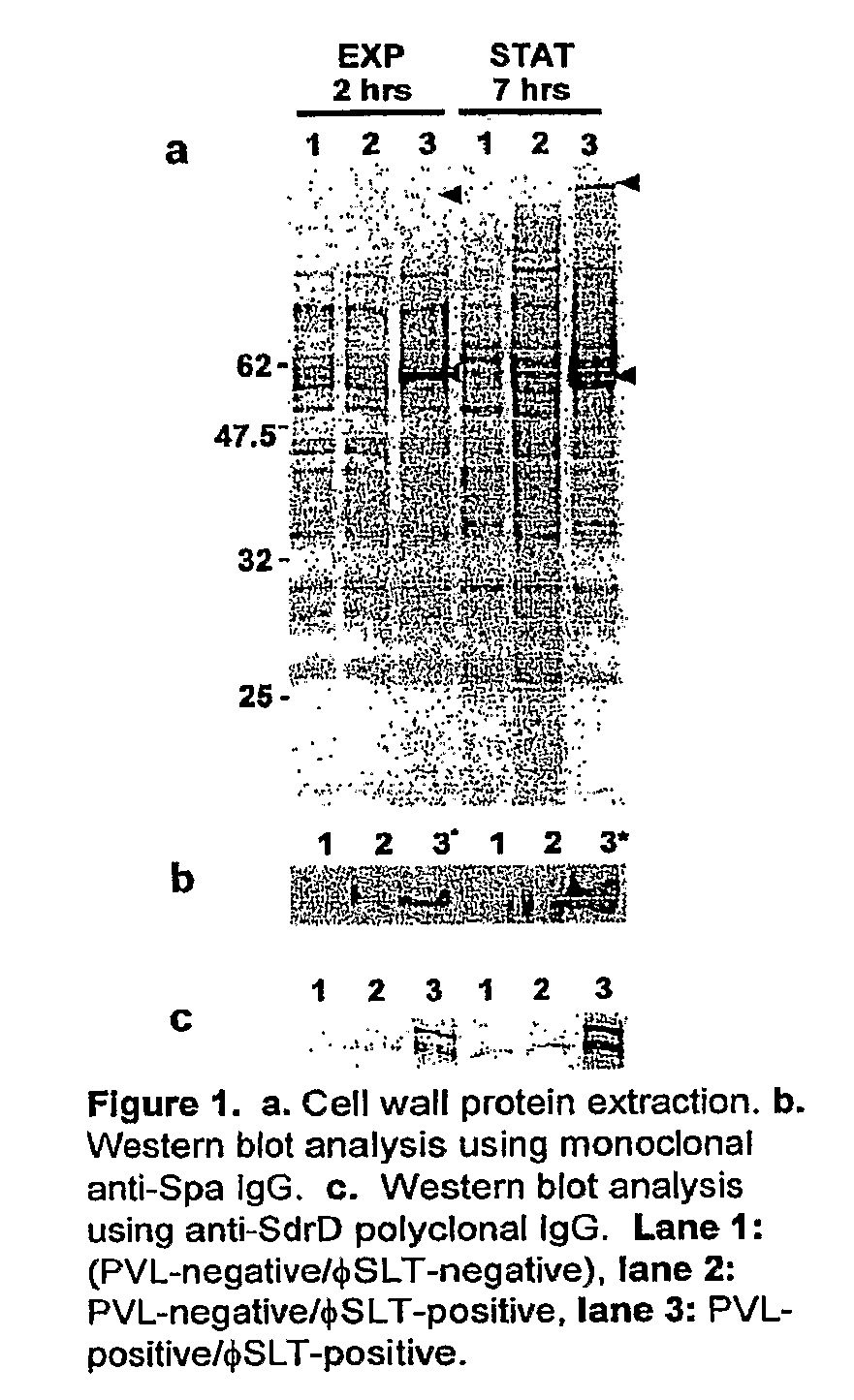Antibodies recognizing a highly expressed putative antigen of ca-mrsa and methods of use
a highly expressed, putative antigen technology, applied in the field of microorganisms, molecular biology, immunology, can solve the problems of increasing the risk of infection, the morbidity associated with these conditions has not diminished, and the infection caused by i>s. aureus /i>is generally difficult to treat, so as to prevent infection, diagnose, and/or treat infections. , to achieve the effect of inhibiting the growth and severity of infections
- Summary
- Abstract
- Description
- Claims
- Application Information
AI Technical Summary
Benefits of technology
Problems solved by technology
Method used
Image
Examples
example
[0080]Most CA MRSA strains produce a toxin called Panton-Valentine Leukocidin and the presence of this toxin has been associated with enhanced binding to extracellular matrix components. Based on our experimental data, we can show that PVL-positive CA-MRSA strains have an altered protein expression profile that results in the over-expression of cell surface adhesins giving these strains an advantage in their ability to invade and colonize the mammalian host. As the presence of the pvl locus appears to alter the expression profile of these bacterial strains, the global gene expression of PVL-negative (FIG. 1, lanes 1 and 2) and PVL-positive strains (FIG. 1, lane 3) was compared. To correlate the transcriptional profiles with our protein expression data (FIG. 1), we harvested total bacterial RNA from both strains at exponential and stationary phases. When compared to the PVL-negative strain, 88 genes show a different expression in the PVL-positive strain during logarithmic growth, whe...
PUM
| Property | Measurement | Unit |
|---|---|---|
| pharmaceutical composition | aaaaa | aaaaa |
| compositions | aaaaa | aaaaa |
| affinity | aaaaa | aaaaa |
Abstract
Description
Claims
Application Information
 Login to View More
Login to View More - R&D
- Intellectual Property
- Life Sciences
- Materials
- Tech Scout
- Unparalleled Data Quality
- Higher Quality Content
- 60% Fewer Hallucinations
Browse by: Latest US Patents, China's latest patents, Technical Efficacy Thesaurus, Application Domain, Technology Topic, Popular Technical Reports.
© 2025 PatSnap. All rights reserved.Legal|Privacy policy|Modern Slavery Act Transparency Statement|Sitemap|About US| Contact US: help@patsnap.com



